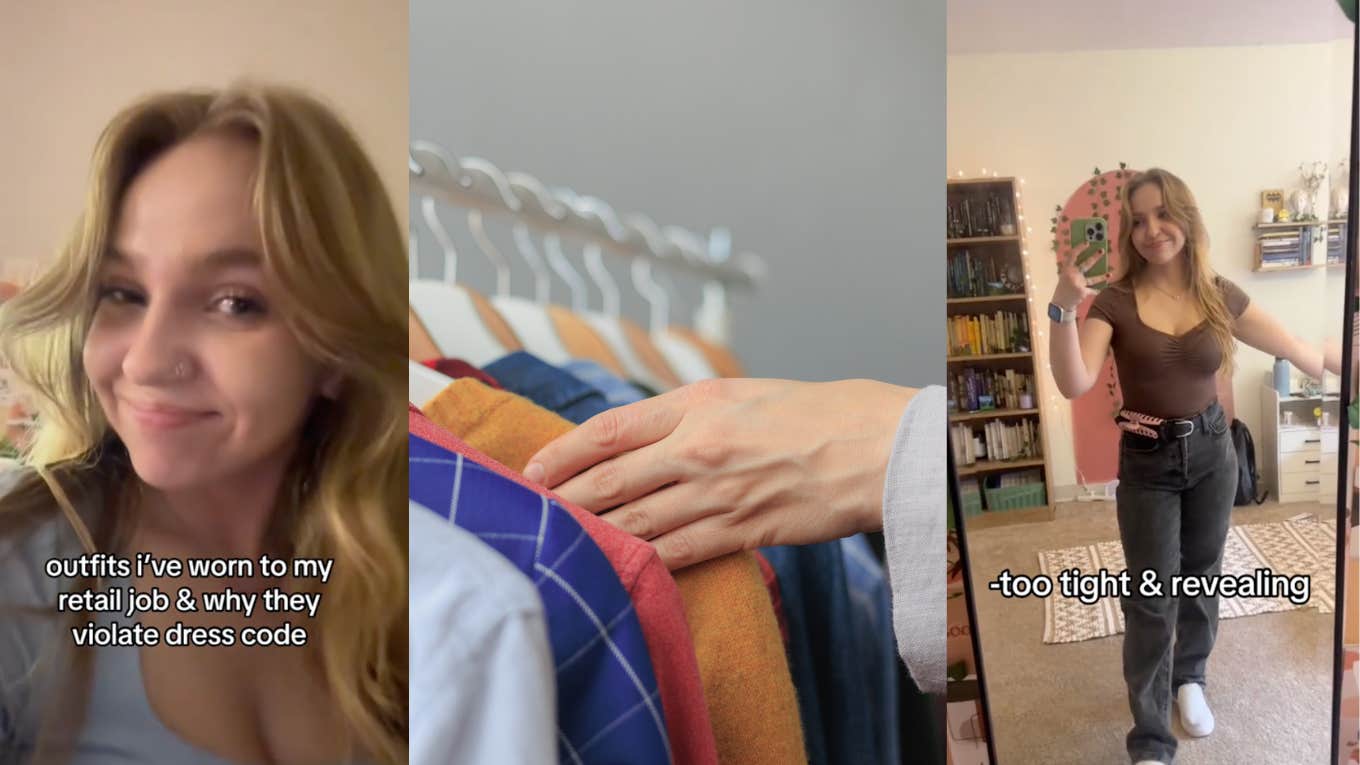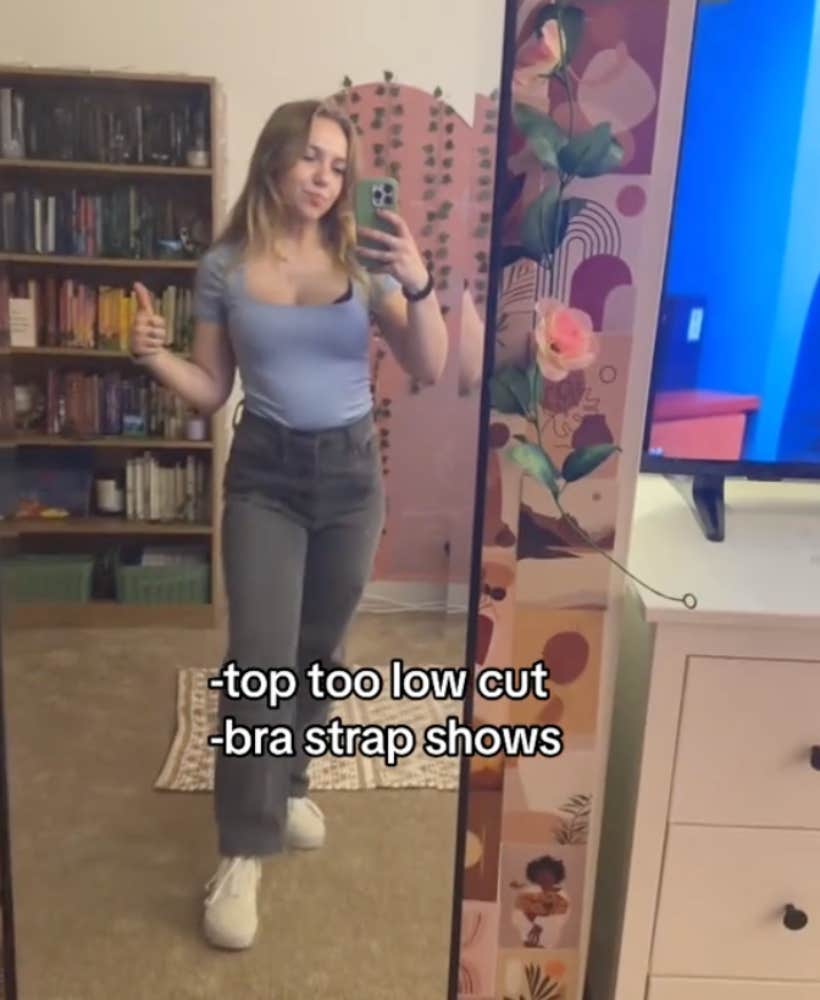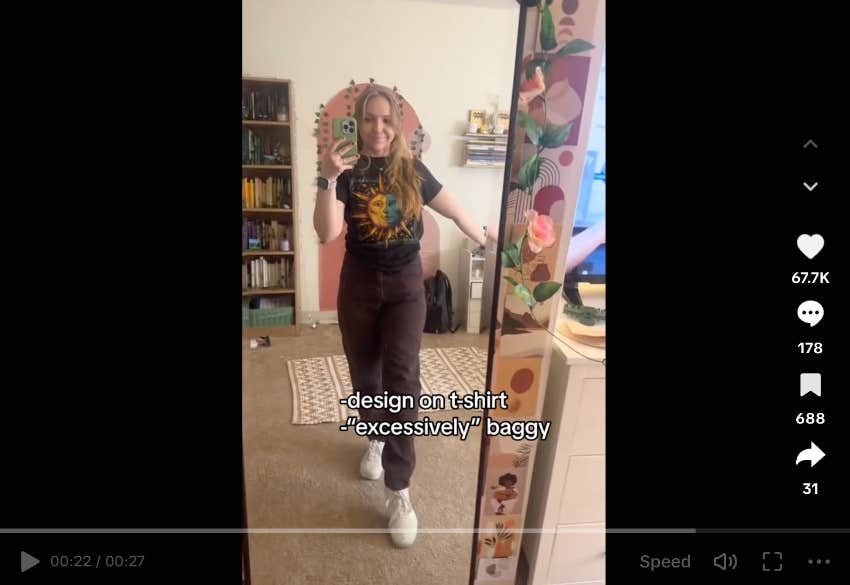Retail Worker Shares The Outfits Her Job ‘Dress Coded’ Her For — And The Exact Reasons Why
Who knew retail jobs could be so strict about dress code?
 @kellsfromhell / TikTok, My July / Shutterstock
@kellsfromhell / TikTok, My July / Shutterstock Kelly Mooney, a retail employee at a clothing store, recently shared a TikTok video that went viral after she revealed the outfits she was supposedly dress-coded for at work. Upon viewing the video, however, people weren’t entirely sure what all the fuss was about.
A retail worker revealed all the outfits that got her dress-coded at work.
In the text overlay of her video, Mooney wrote, “outfits i’ve worn to my retail job & why they violate dress code,” where she then models the said outfits in front of her bedroom mirror.
Within seconds, Mooney shows off her first getup, and the next…and the next, and by the end, the video earned a series of confused reactions by how shockingly ordinary her outfits were.
RELATED: Teenage Girl Shows Off The Conservative Outfits She Was Dress Coded For At School — And Why
From a v-neck button-up, to square-line blouses and a yin and yang printed top coupled with different pairs of jeans — all of which were unripped, by the way — Mooney explains how each form of attire got her into trouble for “violating” the dress code rules.
 Photo: @kellsfromhell / TikTok
Photo: @kellsfromhell / TikTok
According to her employer, most of Mooney’s tops were “too low cut,” or “tight and revealing” to wear to work, except for one outfit, where the user sports an ever-so-slightly loose graphic tee that was deemed “excessively baggy” for her employer’s tastes.
 Photo: @kellsfromhell / TikTok
Photo: @kellsfromhell / TikTok
Most viewers came to the retail worker’s defense against the employer’s strict dress code.
It’s not an uncommon work practice to adhere to a dress code; however, some feel that retail jobs, especially at clothing stores, might be going a little overboard with their efforts.
Relating to Mooney’s experience, a user wrote, “One time I wore an entire outfit from the store I worked at and they said it was ‘inappropriate.’”
“I got dress coded and sent home for wearing white socks,” another user added.
In a separate video, Mooney replied to a commenter who addressed an all-too-common problem with employers who selectively single out their employees’ choice of clothing based on their body type. They wrote, “but imagine [these] shirts on a different body type… same shirt [different] level of ‘low cut’ but you can’t tell one girl no and the other yes.”
Coming at a height of 4 feet and 11 inches, Mooney expressed that mass-produced clothing “are not considering anyone on the small or the big end, whether that’s height or weight.” In other words, popular, and typically more affordable, brands such as H&M, Zara, Forever21 and the like don’t always have a wide range of options for people on the shorter side like Mooney.
She concludes, “And although we have stores that specifically cater to these types of bodies, they typically come at a higher ticket price. So when you’re working six days a week, you just wear what fits and wear what seems appropriate. That’s all.”
Dress codes tend to be disproportionately harmful for women.
From our elementary days and throughout our professional careers, women have somehow always been a target for every dress code policy.
While dress code policies are primarily put into place with the intention of creating a “conducive” working or learning environment, they almost always disproportionately affect women and girls by perpetuating sexist expectations on how they should present themselves, leading to a series of body image issues and other emotional burdens.
Bearing all of this in mind, perhaps it’s time for us to reevaluate dress code policies in an effort to promote change and prevent discrimination. At the end of the day, it really is just a piece of fabric.
Xiomara Demarchi is a New York-based writer and frequent contributor to YourTango’s news and entertainment team. Keep up to date with them on Instagram.
